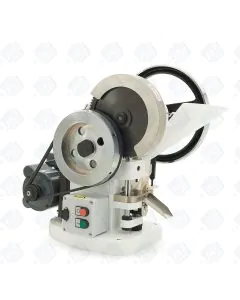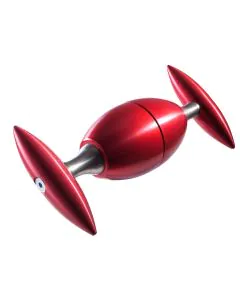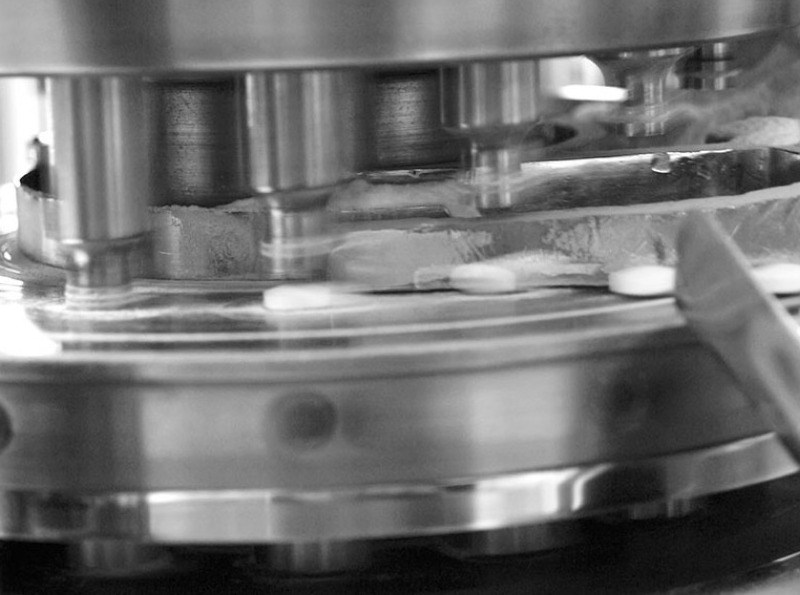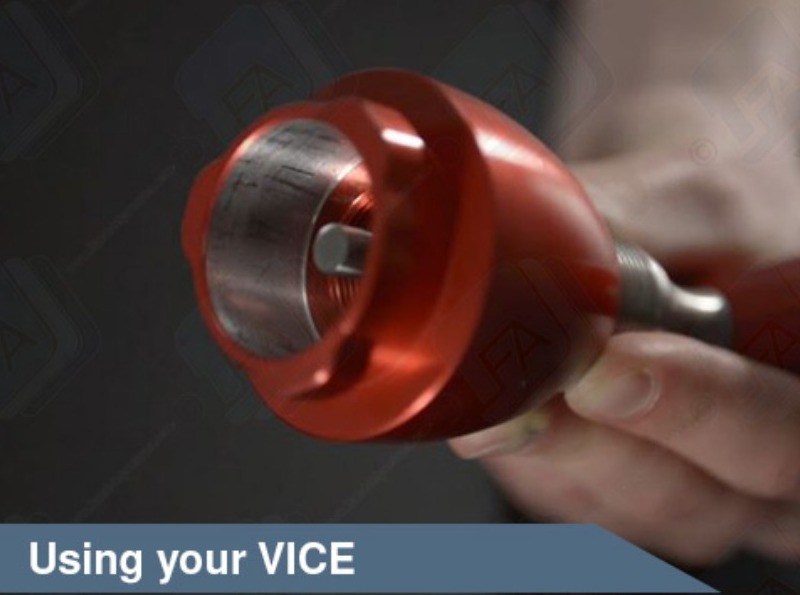Making Tablets - The Right Tools for the job
The concept of producing a new tablet dosage form often starts with the company’s marketing department. Once the concept is agreed it then falls to the tablet formulators who are responsible for detailed design of the product. A key aspect of tablet design is to consider the requirements for the dies and punches. Below are some key points to consider when specifying the dies and press punches.
Appearance plays a crucial role in patient acceptance and as such, the design of the tablet is often left to the capable hands of the marketing department who will often be guided by the principle that ‘first impressions count’. It is then the responsibility of the formulation and production departments to ensure that the design can be realised in practice. The ability to produce the desired form for the tablet lies in having the right tooling. Unfortunately the marketing department often has little knowledge of the issues related to tooling, and this can lead to poor or fractured communications between the marketing, formulation and production departments.
First Impression Counts
Despite the fact that marketing departments would claim to have the best interest of consumers at heart, it is probably wise to assume that takers of pharmaceutical or nutraceutical tablets are blissfully unaware of the work that goes in to producing tablets that they swallow. Most consumers will be completely in the dark when it comes to tablet presses and how tooling equipment works. It is therefore entirely up to manufacturing companies to have the knowledge required to produce the desired products. Choosing the right tooling equipment ensures that the ideas generated by marketing departments end up as tablets that find their way to millions of pharmacies, drugstores and medicine cabinets.
The design of the tablet may reflect the brand of the manufacturer. Incorporating a logo, name or other marking on the tablet can have a profound influence on the consumer’s perceptions of the tablet and company, even if they are not aware the processes used to manufacture it.
A tablet design generally starts as an idea in the marketing department, after which, it is passed to the Research and Development department to start formulation. Small batches are produced as samples, as the R & D department wants to make sure that the tooling works for the formulation – they do not want to risk investing on equipment that cannot be used for production. Nonetheless, the R & D department may not responsible for choosing the production tools; this may be the responsibility of the Engineering department. Often an R & D department sees itself only as the generator and custodian of intellectual property, culminating on the filing of all patent applications for the company. The Engineering team may see themselves as responsible only for specifying and ordering the production tools. The reality is that for the best outcome, all teams should have a passing knowledge of the requirements of each team.
The engineering team would need to know the tablet’s specification (weight, shape, etc…) in order to determine the right model of tablet presses to order. The engineer will also need to know the properties of the formulation e.g., in terms of compressibility and compressive strength each of which may influence wear and tear of the tablet press. Another parameter that requires consideration is the required production rate. If the company purchases a tablet press that can produce 4000 tablets/minute but the required production rate for the tablets is only 2800/minute, there would be unnecessary capital expenditure. On the other hand, if demand for a tablet is higher than originally envisaged, increasing the speed of the tabletting machine may lead to premature wear and tear of the press and purchasing another machine may not be an option. Choosing the right tooling equipment depends on clear communication between all departments and miscommunication can cost the company. If the marketing side does not understand the feasibility and creates a complex design, the design could go all the way to production before the problem is discovered.
Sign Up to Our Newsletter
The importance of planning
It is desireable therefore that both marketing and engineering teams should meet with tooling vendors early on in the planning process. That way, they can talk and share their concerns and issues before actually implementing the design. Tablet making companies should not feel intimidated by consulting with tooling manufacturers, as they can provide an important source of information at the start of the planning exercise. Everybody has his or her own expertise it is important to bring this expertise to the table. If one department is left out of the discussion, the consequence can be poor results and even missed deadlines. This is especially true for the pharmaceutical industry. Confectionary companies, by contrast, have long understood the importance of meeting with vendors to develop their production methods. The profit on a single tablet form of confectionary may be around 1/1000 cents, so that every aspect of tablet manufacture is vitally important and without the right tooling equipment it would be difficult to make a profit. Pharmaceutical companies may expect to make as much as 10 cents per tablet, so that on the face of it, a marginal improvement in the cost of tabletting may not have an immediate appeal.
Questions?
For the tablet manufacturer, sending the right people to talk to a tooling vendor can help relieve the pressure of anticipating the problems that producing the tablet may cause. Meeting the tooling vendor would enable all to build an understanding and trust and anticipate the correct tooling equipment that is required to produce the required tablet. Leaving one department out from this discussion can lead to finger pointing further down the track if the tablet production is not successful.
The right questions to raise at the planning stage include:
- The tablet’s intended size and shape
- The tooling configuration and size needed
- Configuration of the cup and its effects on the compression force
- The likelihood of the formulation to stick or pick
- Sensitivity of the tablet to heat or change of temperature
- The nature of the tablet configuration, particularly if it includes potentially abrasive or corrosive compounds
You can find out more about the tablet press tooling that we offer by messaging us through our contact page.
These are just some examples of questions to ask. Not asking questions can have serious repercussions, and we have good examples of where wrong decisions have been taken because issues were not discussed at the outset with tooling vendors. In one case, a company produced a multivitamin tablet shaped like an elongated ball giving the appearance of two capsules together. The company encountered several problems in the production due to the poor design with significant costly changes to the tooling equipment. The company redesigned their product after consulting a tooling vendor for suggestions and came up with a flatter tablet design. The flatter the cup the more compression force can be given resulting in a faster and easier tablet process.
Another company who wanted to create a triple strength formula tablet consulted the tooling vendor for the tooling required. After several modifications, the company came up with a smaller tablet design but still with the same formulation.
Tooling suppliers are able to explain to pharmaceutical companies, who have a particular tablet design in mind, the implications for creating tooling equipment to produce their design. This may include not only potential problems with the tooling equipment itself, but also the likely response from the public for the proposed design.
Simple or Complex?
One excellent source of information for tooling specification is the American Pharmaceutical Association’s Tableting Specification Manual. Issues that should be considered include:
- Factors to consider when choosing a tooling equipment
- Detailed information about the tablet (quote form)
- Provision of shape, size, design
- Amount of compression force required for tabletting
- Limitations with the tablet’s design
- Tooling design options
- The encyclopedia of pharmaceutical technology may also be a source of useful information on the available tooling options. Domed punch heads, for example, can lower the concentrated stress inflicted on the punches and prolong the service life of the tools
- Type of tool steels to be used – this may have a direct impact on tablet quality
Summary
Tablet manufacturers produce a variety of tablets. Although standard equipment is available it may not be optimized for the particular product under consideration. It is important to ask questions especially with tooling vendors and they can help in the decision making process.
LFA provides a wide range of tooling solutions, and we are happy to assist you with your tablet design and production. Please contact us if you require more information on any aspect of tablet making.









